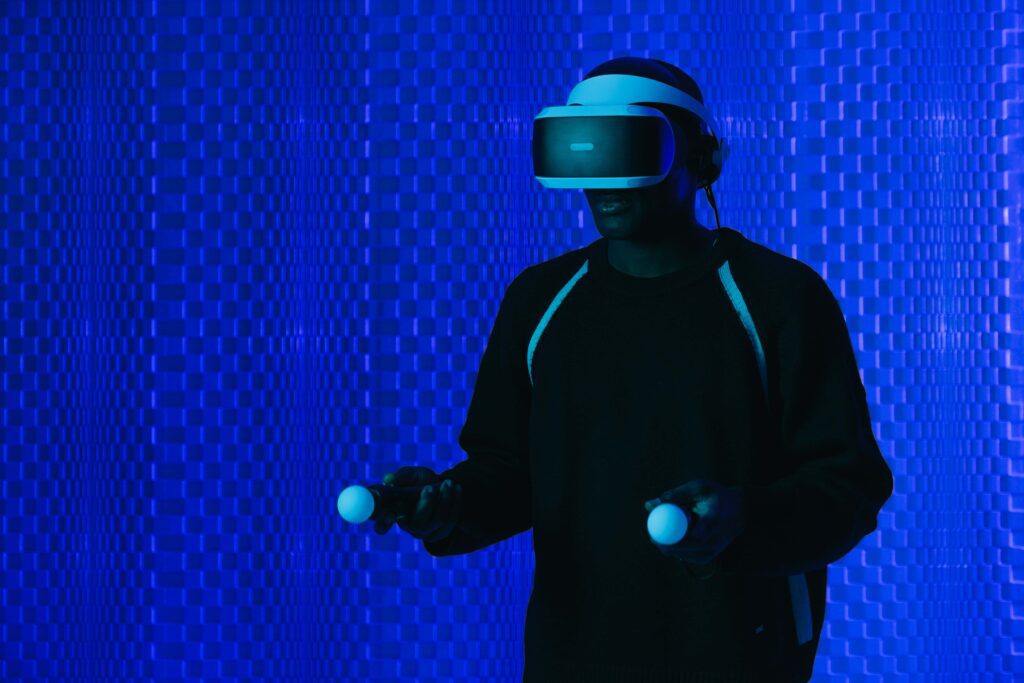|
Getting your Trinity Audio player ready...
|

Accessible technology is integral in helping visually impaired people transcend obstacles and realize their full potential. Thanks to the advancements in assistive devices and digital devices, visually impaired people can access information, connect with others, and explore the world more independently. From braille and screen readers to displays to smartphones and devices controlled by voice technology, they are improving accessibility, encouraging inclusion, and ensuring equal access for people with visual impairments. Harnessing the potential of technology for accessibility opens up new possibilities and creates a more welcoming society that allows everyone to flourish and share their capabilities and skills.
Dr. Samir Sud, Co-founder & Director of Sharp Sight Eye Hospitals, states, “Accessible technology has brought the world a significant change in the lives of people with visual impairments which has allowed them to conquer challenges and be fully integrated into the society. Accessible technology and the digital solution can open up a world of possibilities that allow them to unlock their full capabilities.”
Displays for screen reading, Braille display, and other assistive technology are now indispensable devices for visually impaired users to access information, connect, and navigate the electronic world without difficulty. This has increased the independence of visually impaired people while facilitating their involvement in education, employment, and social interactions.
Technologies for education and access to information. It is the use of technology to offer visually impaired people equal educational opportunities and access to information. Dr. Sandeep Buttan, Technical Lead Eye Health Asia, Sightsavers, provides examples of technology that are:
- eBooks are books with digital formats accessible via the screen reader program or audio players. This allows visually impaired people to have access to a variety of educational tools.
- Software to read screens
- The software programs use artificial braille and speech displays to communicate the content displayed on the computer screen for visually impaired people accessing information from sites or documents and other electronic media.
- Specialized audio players
- Devices like the Daisy player are specifically made for people with visual impairments. They can be used with formats such as Daisy (Digital Accessible Information System), which offers well-organized and user-friendly audio files that make navigating and accessing books and other resources simpler.
- Accessible IT tools like mobile phones/tablets
- They come with integrated accessibility functions, such as screen readers, magnifying tools, and a voice-controlled control. They are accessible and beneficial to visually impaired people.
Technologies to improve safety and mobility: This term describes the application of technology that improves safety and mobility for visually impaired people. Dr. Buttan gives additional examples of this:
- Digital cane
- It is a gadget with sensors and tactile feedback systems that assist visually impaired people in safely navigating their environment. It detects obstacles, gives the user haptic feedback, and alerts them to possible risks.
- Smart eyeglasses
- The goggles come with artificial intelligence features and different sensors. They recognize faces, read the text on documents and signs, and offer audio-based feedback to the user. This helps increase the autonomy and accessibility of visually impaired people by providing real-time data about their surroundings.
Technology can make workplaces more suitable for those visually impaired: This means using technology to provide accessible workplaces that are accessible to visually impaired people. Dr. Buttan introduces newer models of technology to assist the visually impaired.
- Software for screen readers
- As we said earlier, screen reader software can provide digital content to visually impaired people, which allows them to access computers and gain access to information needed for work.
- Accessible computers
- This means adapting computers and software to cater to the requirements of users with visual impairments. This could include adjustments, for example, high-contrast screens, larger font sizes, and keyboard shortcuts designed to be accessible.
Utilizing these tools, visually impaired people can overcome obstacles and gain access to education and information, mobility, and job opportunities with greater ease. This allows them to live in a way that is independent and enjoyable, improving their overall living level.
Dr. Sud says, “The integration of artificial machine learning and intelligence have further extended the possibilities of technology that is accessible. AI-powered devices now have the capability to detect and interpret visual images and enable visually impaired people to have a better understanding of their surroundings. It has not just improved accessibility to information, but it has also improved their security and their mobility.”
The emergence of tablets and smartphones with integrated accessibility features has been an important game changer. They provide visually impaired people with an accessible platform that allows access to a variety of apps, services, and digital content. From reading books to using maps, These devices are indispensable companions that allow people to live happier lives.
“As Ophthalmologists I am incredibly inspired by the impact positive of accessibility technology on my patients. Their ability to make a difference between visually impaired and the sighted is an amazing feat. It is essential that we keep supporting and encourage the advancement of technology that is accessible, making accessibility for all people with visual impairments as well as promoting inclusion in our modern society.” concludes Dr. Sud.



